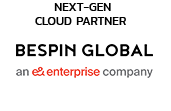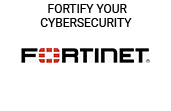
CyberArk’s Laurence Elbana shares tips on how to overcome six critical cloud security audit challenges
We’re witnessing an unprecedented transformation across the region. The UAE’s smart city initiatives and Saudi Arabia’s Vision 2030 programs are encouraging enterprises to embrace cloud technologies at breakneck speed to meet ambitious growth and digitisation objectives. While this cloud-first strategy is essential for competitiveness, it’s also creating a complex security landscape that requires purpose-built strategies for the Middle East region.
Organisations are grappling with a convergence of cloud security complexities. They’re juggling hybrid infrastructures that must seamlessly integrate decades-old legacy systems with cutting-edge cloud platforms, while simultaneously managing shared security responsibilities across multiple cloud providers, each with their own frameworks and protocols. Add to this the challenge of maintaining compliance with evolving local regulations alongside established international standards, and you have a recipe for significant risk exposure.
As the threat landscape continues to intensify, cybercriminals are becoming increasingly sophisticated in their targeting of cloud environments. Organisations that fail to establish robust cloud security frameworks aren’t just risking data breaches; they’re jeopardising their ability to lead in the digital economy that’s reshaping the region.
The Six Critical Cloud Security Audit Challenges
- Environmental Complexity
Multi-cloud deployments across AWS, Azure, and Google Cloud Platform are becoming the norm for Middle Eastern enterprises seeking to avoid vendor lock-in and meet data sovereignty requirements. However, this complexity makes gaining comprehensive visibility into security controls increasingly difficult, particularly when organisations must also maintain on-premises infrastructure for regulatory or operational reasons. - Shared Responsibility Confusion
Each cloud service provider operates under different shared responsibility models, creating ambiguity about who controls what. This confusion is particularly pronounced in the Middle East, where organisations often lack the cloud expertise to clearly delineate responsibilities, leaving critical security gaps unaddressed. - Dynamic Infrastructure Challenges
Cloud environments’ inherent agility, with frequent configuration changes, scaling workloads, and evolving user roles, increases the risk of misconfigurations. For organisations undergoing rapid transformation, maintaining an accurate inventory of resources becomes nearly impossible without proper governance frameworks. - Visibility Limitations
Limited insight into cloud workloads and data flows creates dangerous blind spots. This challenge is amplified in hybrid environments where data moves between cloud and on-premises systems, making it difficult to track sensitive information flows required for compliance audits. - Regulatory Complexity
Enterprises in the region must navigate a complex web of international standards like GDPR and SOC 2, alongside emerging local regulations such as the Personal Data Protection Law in Saudi Arabia, and the UAE’s 2021 Federal Decree-Law on Personal Data Protection. Keeping pace with evolving compliance requirements across multiple jurisdictions is resource-intensive and technically challenging. - Identity and Access Management Gaps
Managing access across multiple cloud platforms while maintaining security principles poses significant challenges. Over-privileged accounts, particularly for developers and engineers, create substantial attack surfaces that auditors frequently flag as high-risk findings.
Best Practices for Organisations
Building a robust cloud security audit framework in the region begins with getting the fundamentals right. Organisations need to establish where their security responsibilities end and their cloud providers’ responsibilities begin, but this isn’t a one-size-fits-all exercise. Each provider has different models, and when you overlay regional compliance requirements, the complexity multiplies quickly. Smart organisations are creating detailed compliance matrices that map local regulatory demands to specific technical controls, ensuring nothing gets overlooked in the handoff between provider and customer responsibilities.
From there, it’s all about maintaining visibility and staying ahead of potential issues. Automated quarterly assessments and continuous vulnerability scanning become your early warning system, especially critical in environments where infrastructure changes happen daily. Organisations also need comprehensive asset discovery tools that can track resources across multiple cloud platforms and document how data flows between cloud and on-premises systems. This is particularly important when data crosses borders, triggering additional GCC regulatory requirements. The monitoring component ties it all together with centralised logging that captures everything while meeting the often-extended retention periods that regional jurisdictions require.
Harnessing Cloud Identity Security for Audit Readiness
Identity security is the foundation of resilient cloud frameworks and is particularly critical given the GCC’s sophisticated threat environment. Organisations should start with zero-trust architecture and role-based access control across all platforms, as this approach not only reduces audit risk, but also aligns well with emerging regional data protection guidelines.
Universal multi-factor authentication is the next priority. While auditors typically focus on critical accounts, it makes sense for organisations operating across multiple markets to deploy it universally with adaptive features for geographic factors. Centralising identity management through unified platforms simplifies audit processes significantly but also ensures consistent policy enforcement. Finally, automated lifecycle management helps eliminate orphaned accounts, a common and increasingly important audit finding.
Building for the Future
Organisations must recognise that cloud security frameworks aren’t merely compliance exercises, they’re business enablers that support sustainable growth. By addressing these six critical audit challenges through systematic preparation, organisations can build resilience that supports both current operations and future expansion across the region.
Laurence Elbana is Director of Sales Middle East, CyberArk
Image Credit: CyberArk





